The heart of the Inca empire. This city is steeped with culture and history of both the Inca, and the Spanish colonials.
We arrived dead tired off of our Salkantay and Sacred Valley adventures. We recovered our stuff from our original Cusco hostel (we spent 1 night here previous preparing for the Salkantay Trek), and switched to one with a cheaper private room. Jokes on us though, this one doesn’t have hot showers. Oh well.
Our first afternoon we were fully on team rest. We got some groceries for dinner, and just laid low. We would start our exploring tomorrow.
We slept in, which for our standards now is about 8:00AM. Our first stop of the day was an Indian restaurant for brunch. This place was the best Indian food that we have had so far on this trip, and we have tried a lot of it. The chili pakora’s were the first proper spicy that we had in a very long time. We had to run some errands after, dropping off our rented camping supplies among other things, before deciding to attend some museums.
The first was the Qorikancha. This building was essentially the Mecca of the Inca empire, its most holy and important site. When the Spanish arrived, they essentially destroyed the temple, only leaving certain foundations, and built a church right on top of it, plundering the gold for the church. The site is now a museum, which contains displays of both Inca history, and colonial art. It was a strange dichotomy. The whole site highlighted the massive loss of knowledge that we have about the Inca empire, due to their eradication by the Spanish.
It was at Qorikancha that we could see the impressive stonework of the Inca’s on display. These massive rocks have been carved so precisely to the custom shapes they need to fit. We theorized about the possible techniques used to create such fine designs. Our best guesses were techniques of carving and sanding. (According to the internet research we did after, there seem to be two techniques at play. The first is mechanical carving, with other stone. The second is a acidic mortar that was placed in between the stones. Due to the weight of the stones above, the acid would dissolve the stone below in certain pressure points, allowing a nearly seamless fit). The scientific world still doesn’t know what techniques the Inca used to move the rocks.
The second museum we attended was the textile museum. Here we learned about the techniques used to create alpaca wool clothing. We also realized how high quality the high quality stuff is. And expensive too. A lot of labour goes into each peice, expecially with a lot of intricate detailing involved.
The clouds were getting dark, so we decided to head to the main square area, as it had covered sidewalks should it storm. And storm it did. We were stuck in an artisan market when it started hailing. The tin roofs over the market lessened the hail, but small stones were still getting though and hitting the wares. Everyone in the market got wet. The storm must have lasted for half an hour, and slowly cleared to a drizzle after.
We had some sandwiches from a cafe for dinner, and retired for the night.

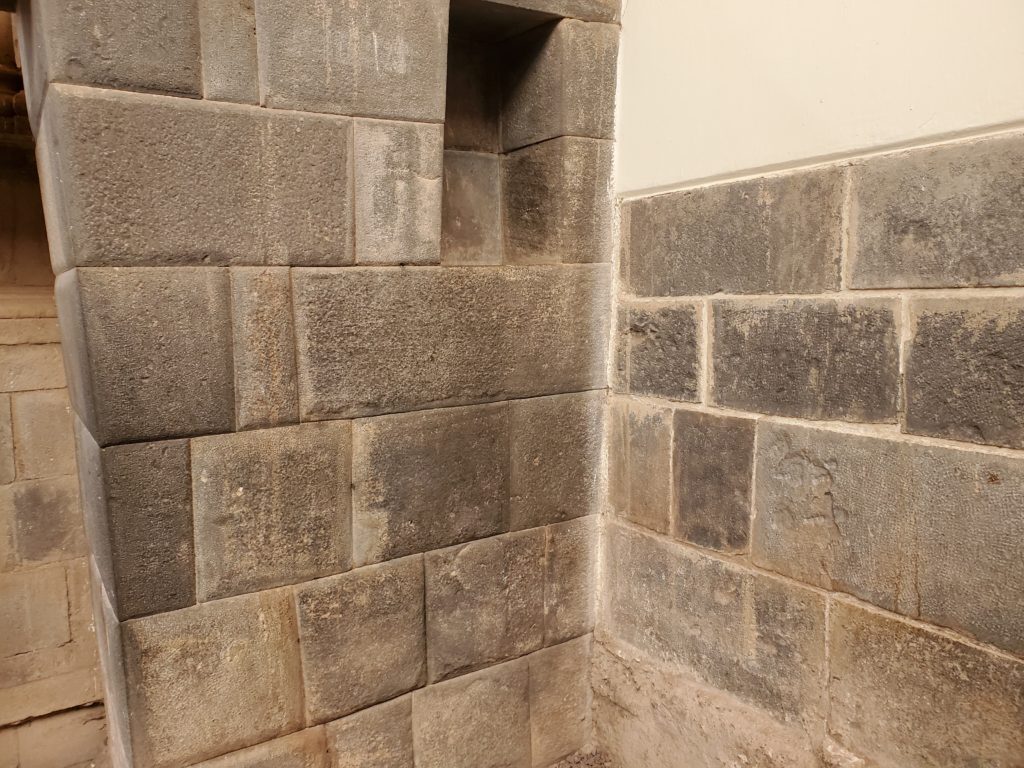
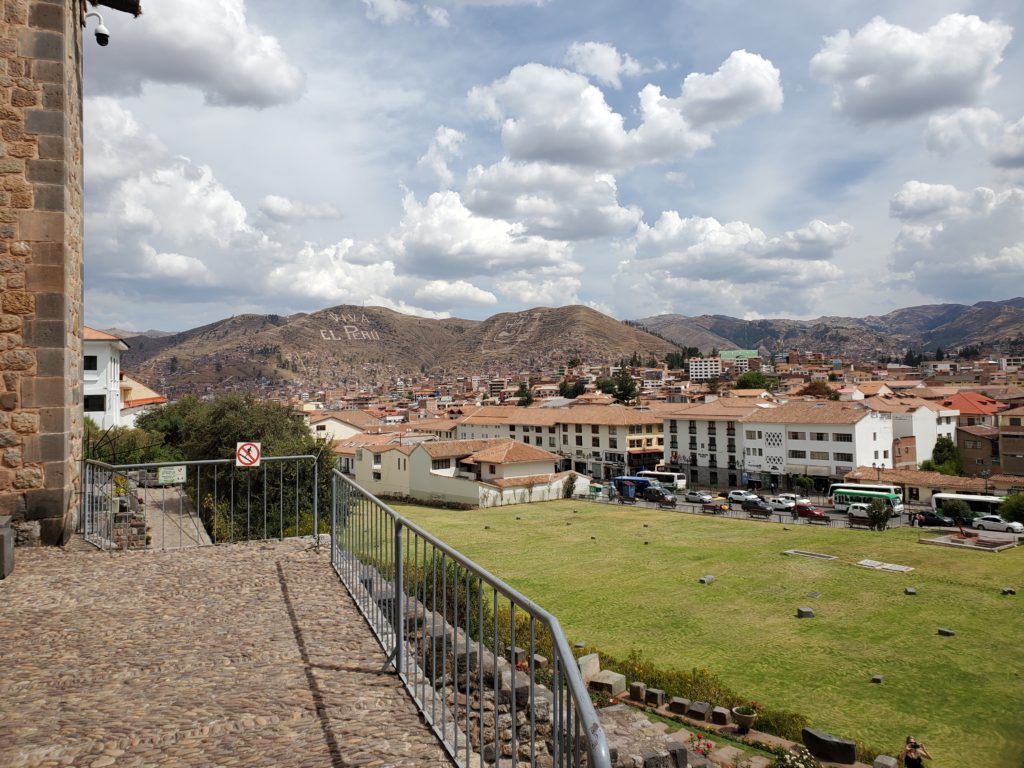

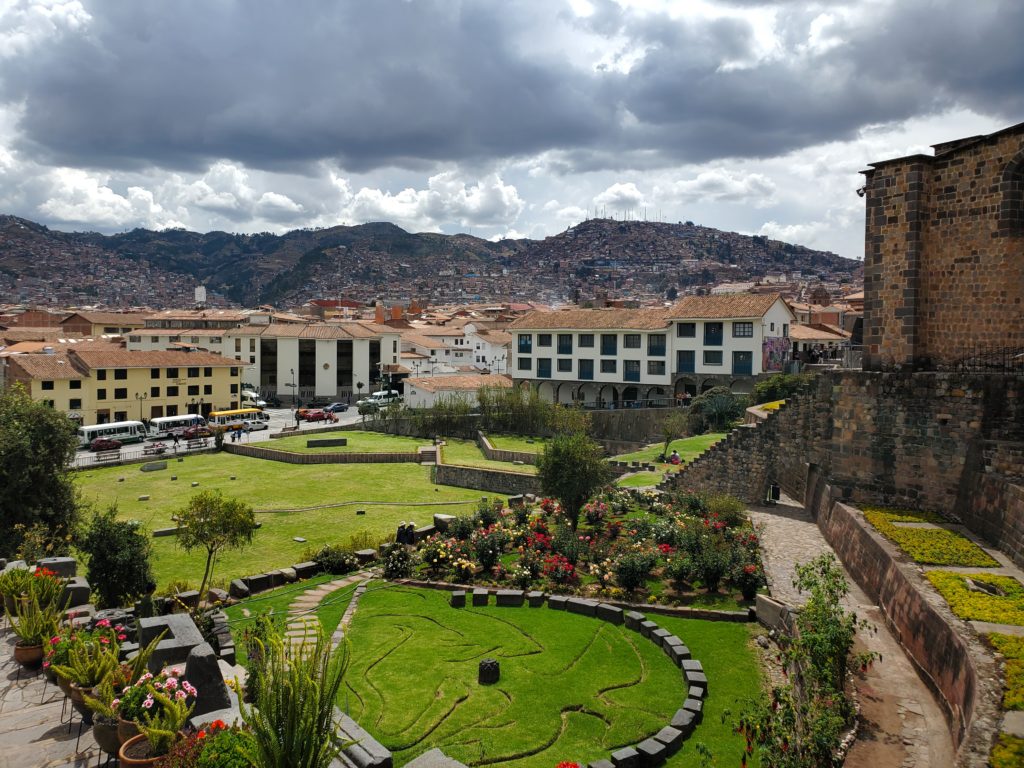
Our second day was spent exploring the main centre of Cusco and the San Blas neighborhood. Cusco as a city understands it’s role as a centre of Inca tourism, and it certainly shows. The streets are lined with Irish pubs and artisan markets. Women trying to coax you into getting a massage are every 50m or so. The echo’s of “massage?” ring through the streets.
This day was a holiday in Cusco as well, the Angamos battle celebration. Angamos battle was a naval battle in 1879 between Peru and Chile, one of many conflicts in the Bolivia-Chile war. The Peruvian fleet got flattened, but they still celebrate the bravery of Admiral Miguel Grau and the others on the ships that day. There were many parades throughout the streets, and fireworks that went off at all hours. Buses still had their routes to do, and would drive around the parades.
Cusco’s main square is full of tour agencies and overpriced restaurants. The churches around it are quite lovely though. We didn’t spend a lot of time here, instead opting to head up the hill to the San Cristobal church and viewpoint. The city looks lovely from above.
We journeyed through the San Blas neighborhood after. This neighborhood rests at the foot of a hill, with a large statue of Jesus overlooking both it and the city. Potted plants line the pedestrian only streets. It was a pretty neighborhood, with lots of art.
Exiting the neighborhood, we passed the many-angled stone that for some reason is super famous. It’s got 14 sides sure, but after looking at all of the other Inca stonework, it doesn’t seem to stick out among the rest. That doesn’t stop a lineup of tourists to take their photo with it.
Dinner was had at a sushi restaurant. It surpassed all of our expectations, and we even went back the next night. Great find.
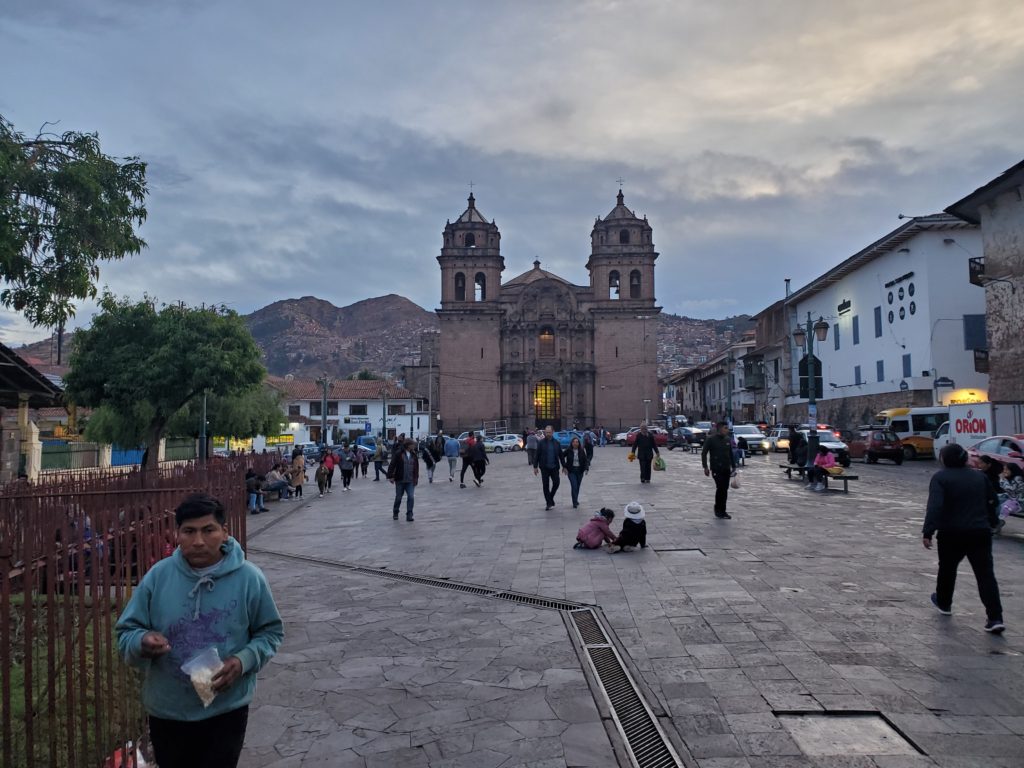

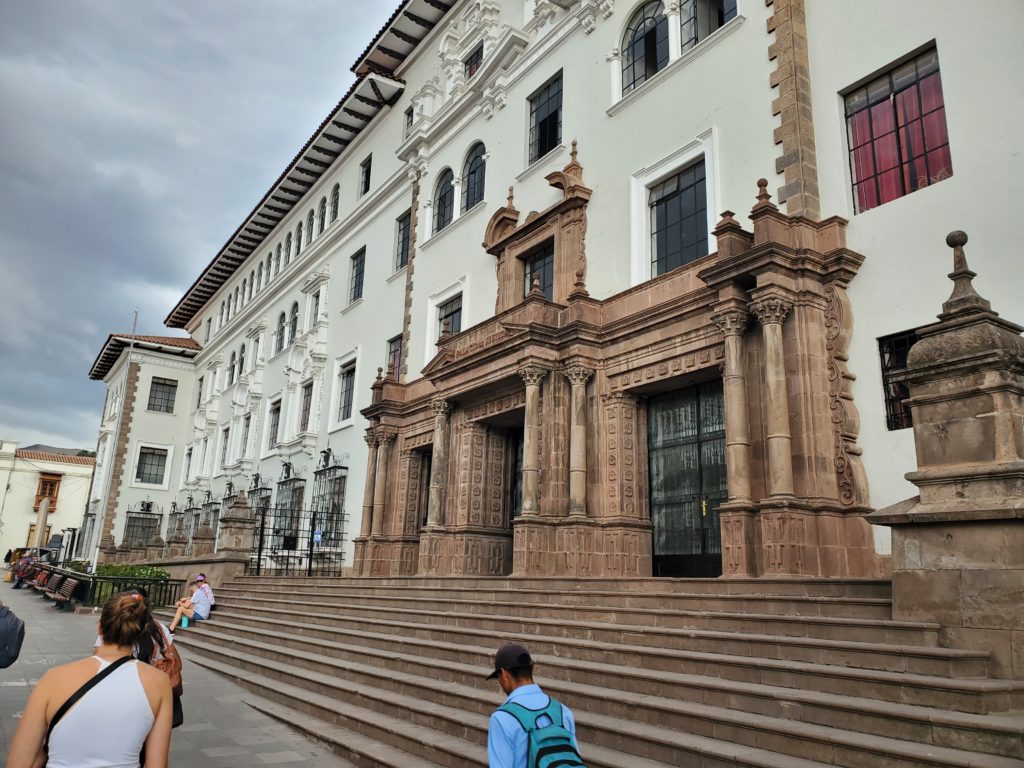
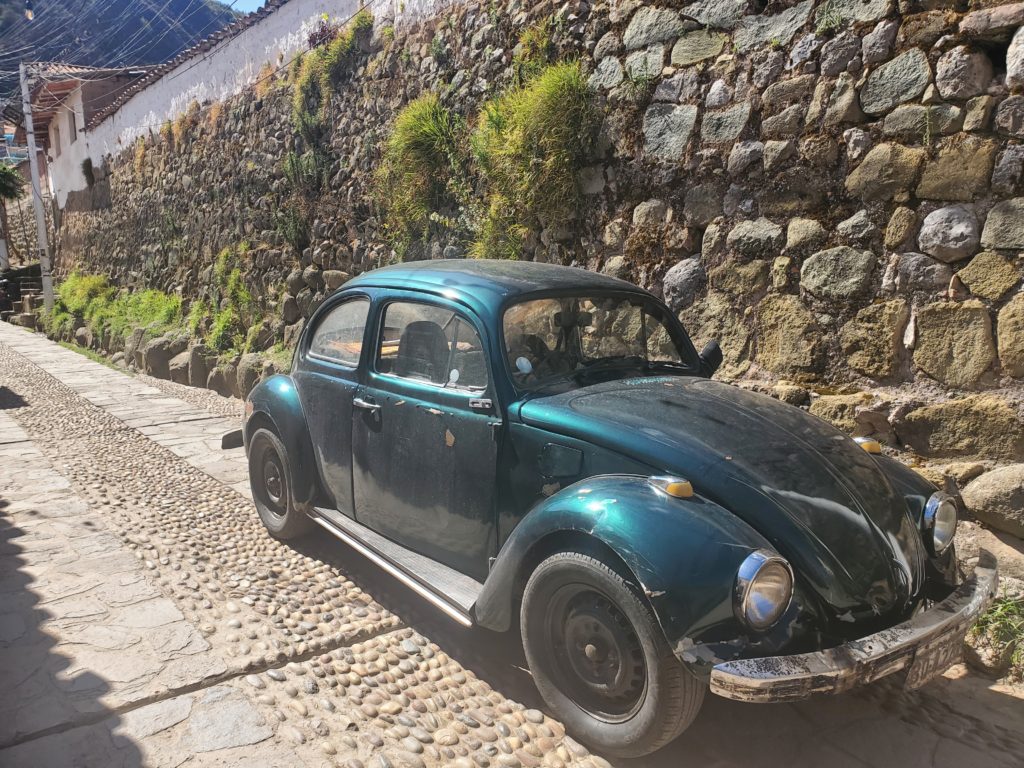
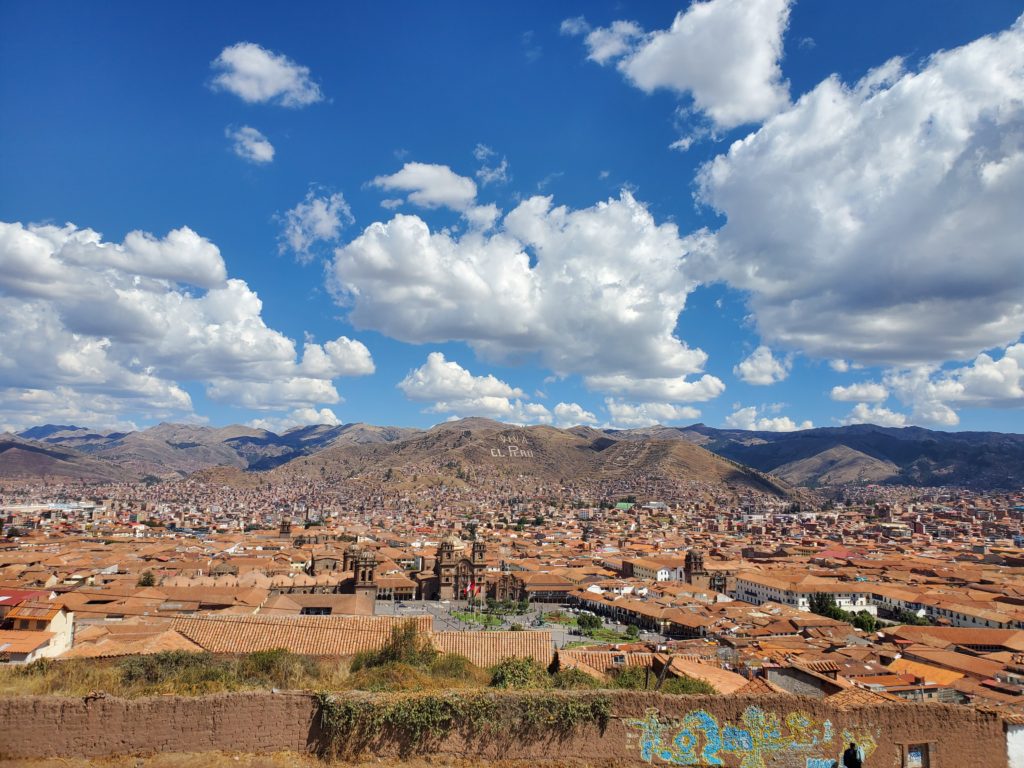

Our third day in Cusco was spent running around completing errands. We had buses to book, supplies to grab, and time to rest (We have to write these blogs sometime!). Cusco as a city makes it very easy to accomplish these things.
Our final full day in not only Cusco, but Peru, was spent museum hopping again! Our first stop was the Inca Museum. This building displayed a lot of Inca artifacts and information. It also included information on the cultures that were present in the regions before the Inca (and subsequently the Spanish) conquered them. It was a nice way to spend a couple hours.
The second stop was the Pre-Columbian Artifact Museum. Here there were artifacts form all of the pre-Spanish cultures of Peru. You could watch the evolution of the pottery in effect, as the museum behaved somewhat chronologically. The differences in artistry were also visible depending on what part of Peru the artifact came from. In general, ancient Andean cultures really liked their jugs that displayed zoology on them.
We headed back up through San Blas to another viewpoint of the city. We watched the sun partly set, before we got hungry. We had dinner at Kao, our favorite Peruvian-Thai place form Arequipa, which has a location in Cusco. Very good.
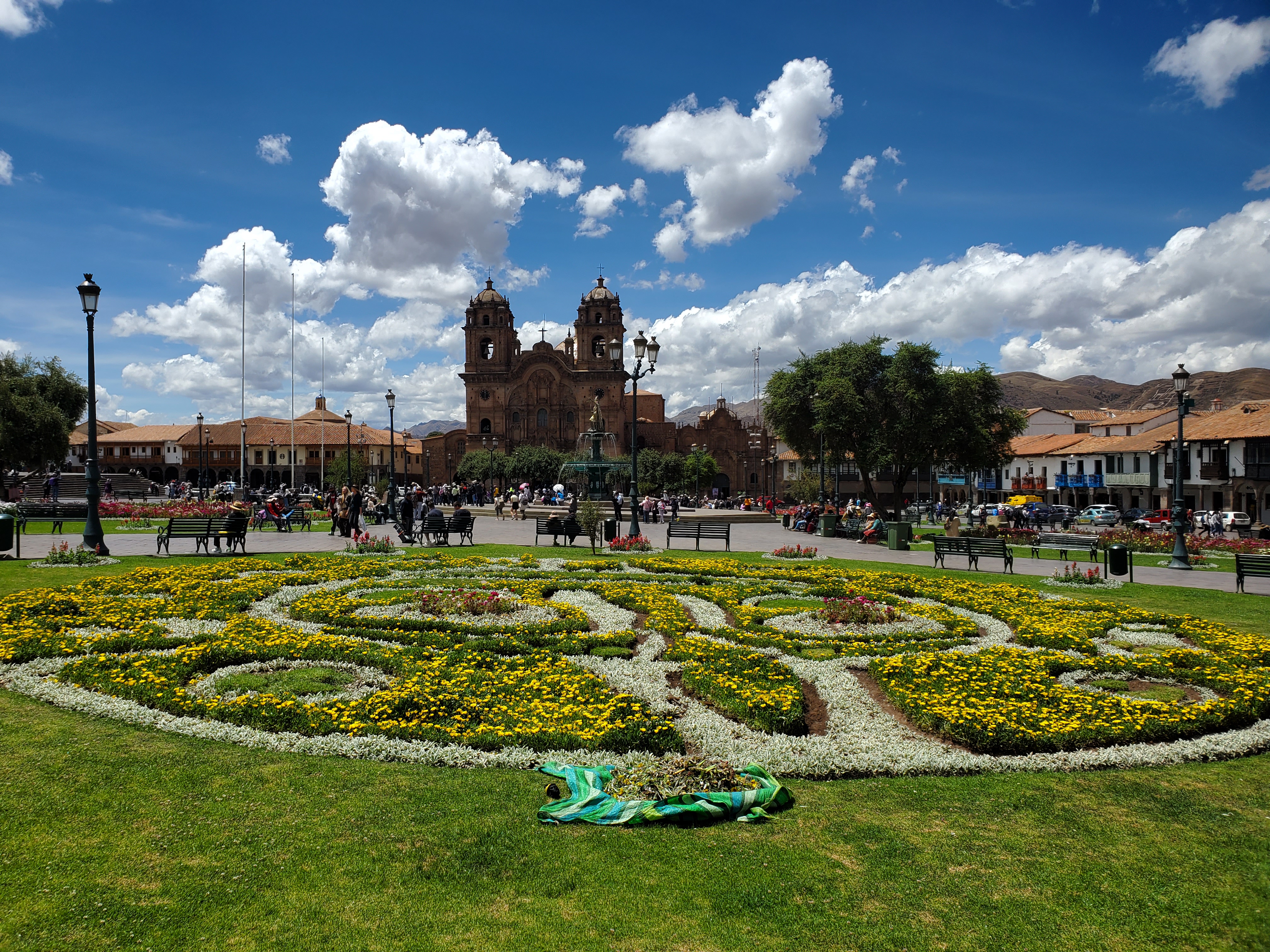



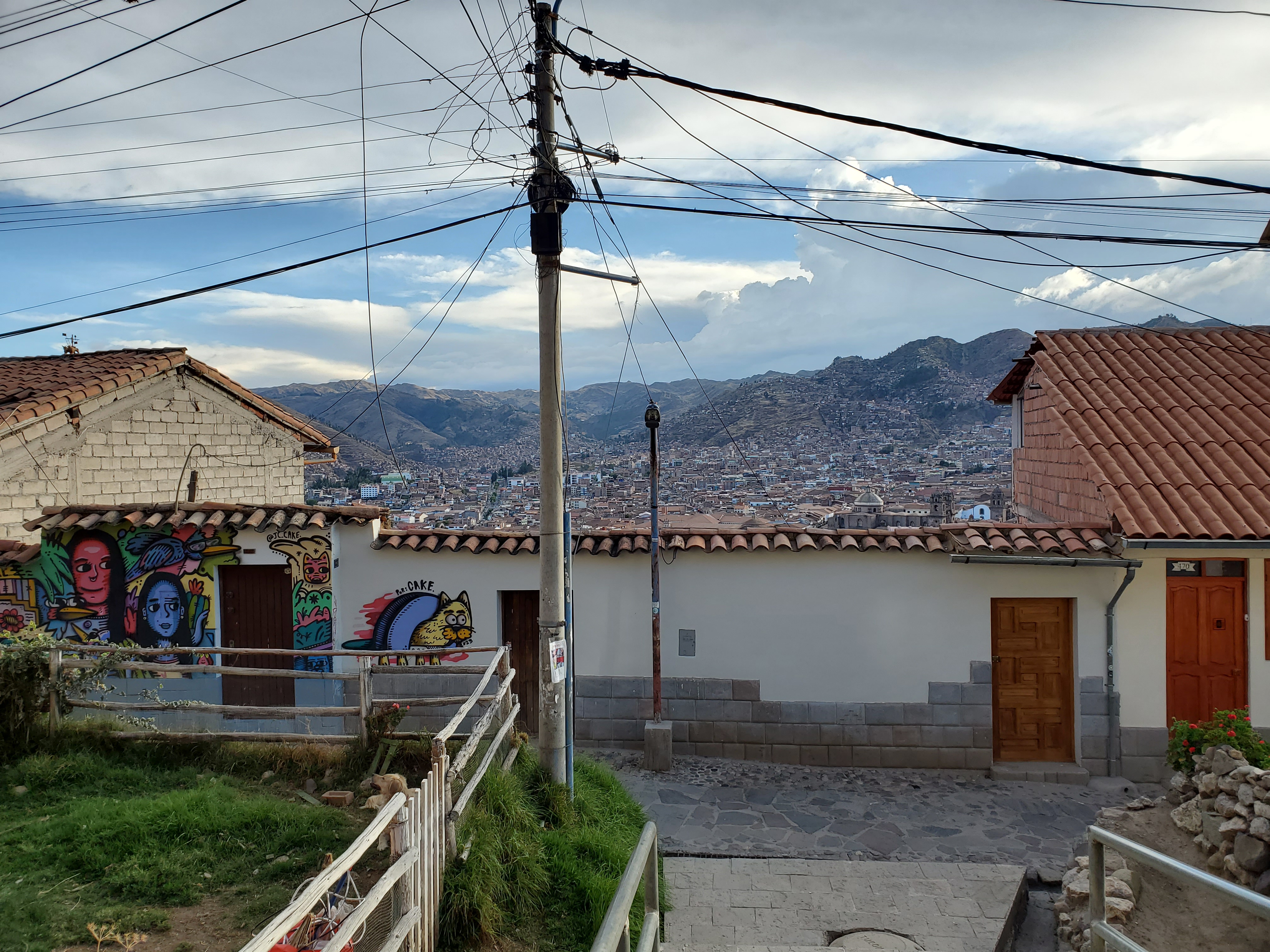
We departed Cusco on a night bus, with it’s final destination being in Bolivia. But there were a couple stops along the way before we get there! We can’t wait to see you for our final adventure in Peru!

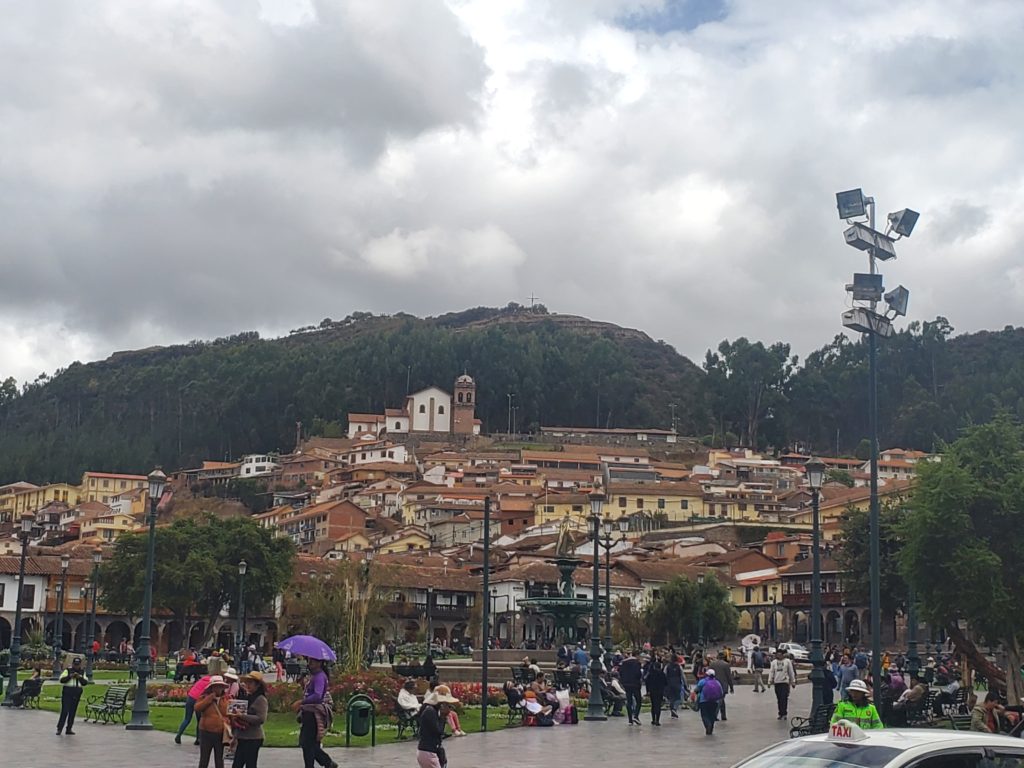
Your days are very full. It is wonderful that you enjoy museums so much!
Cusco is a great people watching city, not new news for you guys. Looks like you had a little sunshine which is always welcome at high altitudes, stay warm, stay cool!
Almost a day or two of rest – a fair bit of walking it sounds like, with some good food to nourish and replenish!